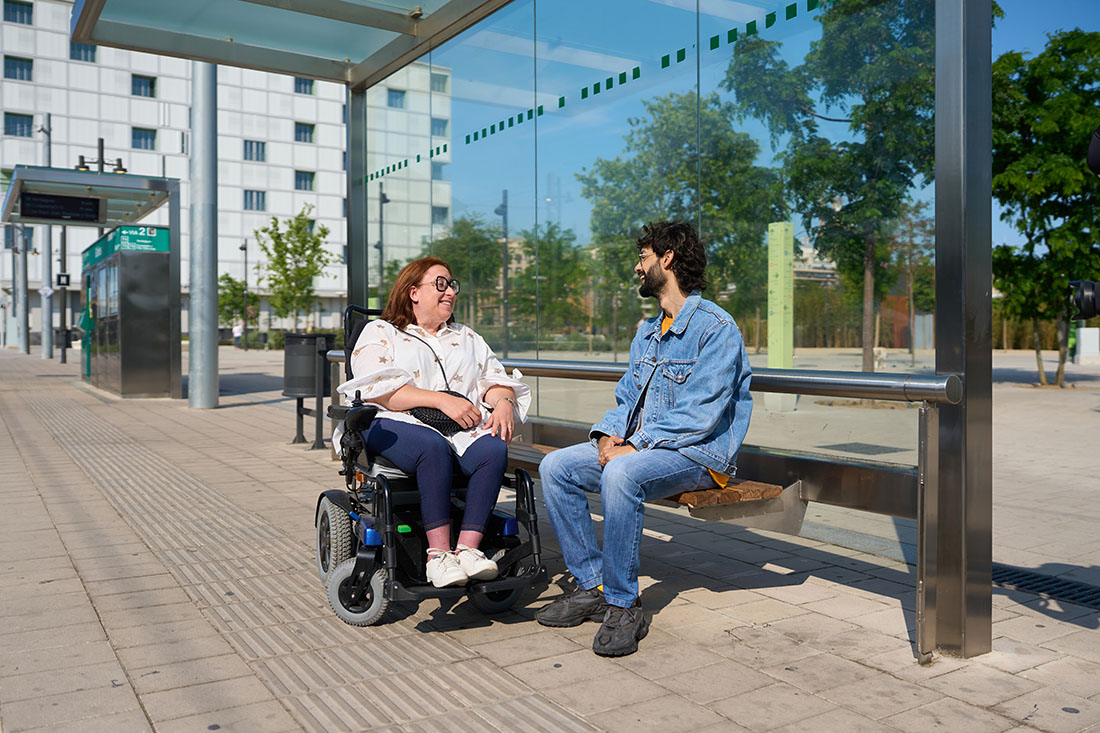Zebra crossings were invented to enhance pedestrian safety, providing right of way to cross the road and obligating drivers to stop. Yet motorists still regularly violate this traffic code, leading to road traffic accidents that put the public at risk. In a recently settled personal injury case, our client sustained multiple injuries after she was struck off her electric wheelchair by a driver who not only failed to stop and give way at a zebra crossing but also fled the scene, turning the incident into a hit-and-run accident.
Our Case Handler, Shah Uddin, expertly represented our client throughout this compensation claim. Given the untraceable nature of the driver, Shah engaged the Motor Insurers’ Bureau (MIB). Using his legal and case management expertise to seamlessly accommodate a language barrier, reassure our client through the MIB process, and spot discrepancies early to build a watertight case and ensure that just and fair compensation was achieved.
Discover how Shah’s attention to detail and empathetic guidance helped our client progress through this claim and achieve a successful outcome, securing £12,000 in compensation.
What caused the road traffic accident?
A long-term disabled electric wheelchair user approached a zebra crossing and began to cross the road. As she was crossing, a driver ignored their legal obligation to stop and continued through, striking the woman from her wheelchair, causing significant injuries.. Initial injuries included widespread bruising around her left hip and lower stomach area, but after multiple medical examinations the full extent of the injuries included:
- Lower back pain
- Left hip pain
- Lesions on stomach
- Severe left-side rib pain
- Bruising on chest, abdomen, and left leg
- Moderate grazing on left leg and moderate scarring on left leg
- General stiffness and discomfort
A few days after the accident, the injured lady came to Optimal Solicitors for help. She was unsure if a compensation claim was possible due to the driver’s untraceable status.
We were quick to reassure her by explaining that we could raise a claim to the MIB who would initially try to locate the driver. On our client’s instruction we created a mandate on the MIB, after which they confirmed that no trace of the driver could be found. Therefore, we proceeded to progress the claim directly through the MIB.
Let’s take a quick look at the law and key elements around road traffic accident claims to give you a greater understanding before we unpack the rest of this case.
How do I know if my road-traffic accident qualifies for compensation in the UK?
|
Requirement |
What it means for you |
|
You were involved |
You were a driver, passenger, pedestrian, cyclist, motorcyclist or other vulnerable road user at the time of the crash. |
|
You were injured |
Medical evidence must link a physical or psychological injury directly to the accident. |
|
Someone else was at fault |
A third party—usually another driver—breached their duty of care (e.g. speeding, using a phone, failing to stop at a crossing). Even partial blame on their side can be enough. |
|
You’re within the legal time limit |
Most adults have three years from the accident (or from discovering an injury) to start court proceedings. • Children: clock stops until their 18th birthday; they then have until age 21. • Lack of capacity / serious brain injury: the limit can be paused until capacity returns. |
Building a strong personal injury claim
It was essential for us to set expectations around MIB claims in these early stages. Our client, like many others, assumed that we would receive an instantaneous response and resolution. However, the MIB assists approximately 35,000 victims of uninsured and hit-and-run driving annually. This requires a level of patience and persistence from our solicitors, as well as clear communication with our clients to reassure and inform them of the reasons behind delays, providing regular progress updates throughout.
In this case, we laid out the expectations for our client, putting her at ease about any potential delays or additional requirements for the MIB to conduct their investigation. Shah reassured her that we would be guiding her through every step of the claim. Due to our client’s language barrier, we made sure that expert translation was always available to ensure complete understanding throughout the case. We also provided clear instruction for the MIB to provide a translator for their investigations.
Our client received a total of three separate examinations from three different medical experts. This included a referral to an orthopaedic expert to help the MIB ascertain how long her injuries would take to resolve. Our client subsequently received physiotherapy via the MIB along with rehabilitation. During these examinations, the orthopaedic expert raised potential psychological trauma. We therefore recommended our client to get a psychological assessment for situational anxiety, explaining that this could not only help manage her symptoms, but increase the valuation of the offer. Our client declined this.
With a full and thorough prognosis on the table, Shah wasted no time proceeding with an in-depth evaluation of all injuries sustained in the accident. We also ensured our client evaluated all medical reports and witness statements provided by the MIB to guarantee absolute accuracy. It was here that multiple errors were identified which we promptly addressed with the MIB. Failing to spot issues before the claim progressed could have resulted in a lower offer of compensation, so it was vital that we spotted and resolved these straight away.
In addition, it was important that Shah assessed any loss of amenities that our client experienced which could further contribute to a higher valuation. Cooking, shopping, and everyday tasks were identified as being severely restricted by the accident, requiring personal care from her husband and friends. Shah put this forward to the MIB, further supporting an already strong claim for compensation on behalf of our client.

Going above and beyond for our client
Due to a misunderstanding in translation from one of our client’s conversations with the MIB, she was under the impression that a claim for compensation was no longer possible. Respecting the stress this caused her during this difficult time, Shah reassured our client that the MIB would be investigating her claims and that we would keep her updated with any progressions or admissions of liability, supporting her the whole way.
As well as organising in-house translators, Shah identified our client as someone who required more regular communication and reassurance throughout the process. This included general check-ins, as well as key information on our next steps before they happen and any important dates when we would action progressions. Shah expertly maintained this commitment to client support and acute attention to detail on all translations throughout the process.
Successful compensation claim result
After months of hard work, regular communication, and perseverance, Shah received an offer from the MIB of £12,000 on behalf of our client. He advised her that this fell just within our £12,000-£15,000 valuation, explaining that we could counter for more with her permission. He took her through any other potential damages and losses that we could add to the claim to push for a higher offer – such as medication, treatment, and other loss of amenities – but our client was very happy to settle and was clear with her instruction.
The absence of a defendant and the MIB backlog can make hit-and-run cases difficult to conclude swiftly. This requires persistence and perseverance from our solicitors, and considered case management to keep our clients informed and reassured throughout. In addition, we must assess every factor with granular detail – from witness statements and injuries to loss of amenities – to ensure the MIB has a full and proper depiction of the accident, the injuries, and the collateral impact on our client.
In this case, Shah demonstrated his depth of expertise working with the MIB, spotting witness statement mistakes early, correlating three separate medical reports, and going above and beyond with regular client communication to ensure she remained calm and supported all the way through to the case’s successful conclusion.
Injured in a hit-and-run accident? Optimal can help
If you’ve been the victim of a road traffic accident where the perpetrator is either untraceable or uninsured, you can still proceed with a claim for compensation – and you can trust us to help you achieve the optimal outcome.
Our personal injury solicitors are highly experienced in working with the MIB on cases of this nature. We’ll work closely with you to determine the highest valuation possible, fighting hard to achieve this while supporting you every step of the way.
We guarantee:
- No-win, no-fee representation
- Proven success in securing maximum compensation
Take the first step towards justice. Contact us today.
Hit-and-Run Compensation FAQs
- What should I do straight after a hit-and-run accident?
Call the police immediately and secure a crime reference number, then get medical help so your injuries are recorded. Collect as much evidence as you safely can—dash-cam footage, witness contacts, photos of the scene and damage. These items form the foundation of any later MIB claim. - Can I get compensation if the driver can’t be traced?
Yes. The Motor Insurers’ Bureau (MIB) runs the Untraced Drivers Scheme, which pays damages when hit-and-run motorists disappear. Your solicitor submits the evidence online and the MIB acts as the missing driver’s insurer. - How long do I have to start a hit-and-run claim?
Most adults must begin a claim within three years of the crash (or of realising the injury was caused by it). Children can claim any time up to their 21st birthday, and adults who lacked mental capacity or were seriously incapacitated can receive extra time. - Who actually pays the compensation when no driver is found?
The award comes from the MIB, a fund financed by UK motor insurers to cover victims of uninsured or untraced drivers. It steps in when there is no insurer to pursue. - How much compensation could I receive for hit-and-run injuries?
Amounts range widely: minor whiplash cases can be worth a few thousand pounds, while severe brain or spinal injuries can exceed £300,000. The figure depends on injury severity, future care needs and lost earnings. - How long does an MIB claim usually take?
For uncomplicated injuries the MIB aims to decide liability within about three months; larger or more complex losses take longer, but the process is usually quicker than a full court case. - What evidence will strengthen my hit-and-run claim?
Key items include a prompt police report, medical notes linking injuries to the crash, witness statements, CCTV or dash-cam footage, photos of the scene, and receipts for treatment or travel. A well-documented file increases both success prospects and payout size. - Will an MIB claim affect my own insurance or no-claims bonus?
If you only claim through the MIB and do not ask your own insurer to repair your vehicle, your no-claims discount usually stays intact. Using your comprehensive policy for repairs may count as a “fault” claim until the MIB reimburses your insurer, so always tell them the driver was untraced.

